Overview of Photographic Tours in Nepal
When one thinks of Nepal, the first thing that comes to mind is usually the Himalaya mountains. Although these towering peaks are a major part of the nation’s charm, Nepal has much more to offer other than just mountains. For a photographer, this small yet diverse country is sheer variation: from natural beauty to ancient cities, from pretty villages to colorful festivals, any photo shoot here would seem a succession of frames over the sparkling canvases of a living story as against mere snapshots on a trip.
So why is Nepal a special place for photography?
Nepal is a photographer’s paradise. From the heat of the Terai plains to the snow of the Himalayas. You can travel once, seeing high mountains, lakes, forests, and rice fields. Imagine yourself walking in the Annapurnas, drinking tea at Mugling and taking a photo of the sun setting over Phewa Lake in Pokhara. Nepali culture photos are rich too. More than 120 ethnic groups reside in Nepal and each has its own set of festivals and customs. Amazing colors, feelings, and tradations may be found when walking around sightseeing Bhaktapur or participating in Tihar or Holi; these make for authentic, colorful photographs. Nepal is a dream destination for photographers.
Here are the types of photo tours you can begin on:
Hiking Photography Trips:
When people think of photography in Nepal, they often imagine the famous trekking routes like Everest Base Camp photography, Annapurna photography, Langtang photography, and Manaslu photography. These trails offer stunning mountain views. Along the way, you’ll see local life—people carrying firewood, spinning prayer wheels, or sharing meals. You’ll also pass through beautiful forests. For example, during spring on the Mardi Himal trek, the rhododendron flowers burst with color. It’s a perfect mix of nature, culture, and unforgettable photo moments.
Touring Photography Trips:
Nepal is a photographer’s paradise. From the heat of the Terai plains to the snow of the Himalayas. You can travel once, seeing high mountains, lakes, forests, and rice fields. Imagine yourself walking in the Annapurnas, drinking tea at Mugling and taking a photo of the sun setting over Phewa Lake in Pokhara. Nepali culture photos are rich too. More than 120 ethnic groups reside in Nepal and each has its own set of festivals and customs. The organized chaos of Thamel is great for street photography, and the mystical Pashupatinath Temple provides emotional portraits and fascinating rituals on the Bagmati River.
Aerial Photo Tours:
If you don’t have much time, or you want an aerial view. Helicopter tours are just a great option to photograph the Himalayas. The pictures of snow-capped mountains, deep valleys, glacial and turquoise rivers, and tiny villages perched on sidewalls can all be shot at great distances perfect for wide-angle shots. Adventure seekers to Everest, Annapurna or Gosaikunda can do Heli tours. It is obviously a wonderful experience for photographers wishing for something more dramatic and different.
Festival & Nepali Culture Photography:
Timing your trip right may involve you in one of Nepal's many colorful festivals. Beauty of Tihar, the color of Holi, or the cart races of Rato Machindranath – it's action, color, and emotion everywhere. Each region will have its local festival, for instance, Tiji Festival in Upper Mustang is a masked dance and spiritual enactment.
Wildlife Photography:
Nepal is not only about mountains, but also about rich jungles and wildlife. In Chitwan or Bardia National Park, you can photograph Bengal tigers in their natural habitat, rhinos cooling off in the river, or elephants strolling through the grasslands. This is another side of Nepal that many photographers don’t expect.
Top Photographers' Trekking Routes
Nepal is a photographer's paradise. Every hiking path presents the chance to authentically and beautifully portray nature, culture, and everyday life. Every turn offers a different perspective, from snow-capped mountains and verdant valleys to vibrant mountaintop communities. Here, trekking is about enjoying the journey as much as getting to your destination. You'll see breathtaking scenery, interact with people, and capture priceless moments on camera. Trekking in Nepal offers a plethora of amazing photographic subjects for both professional and amateur photographers. Below is a simple guide to the best treks for photography in Nepal.
Everest Base Camp (EBC) Trek:
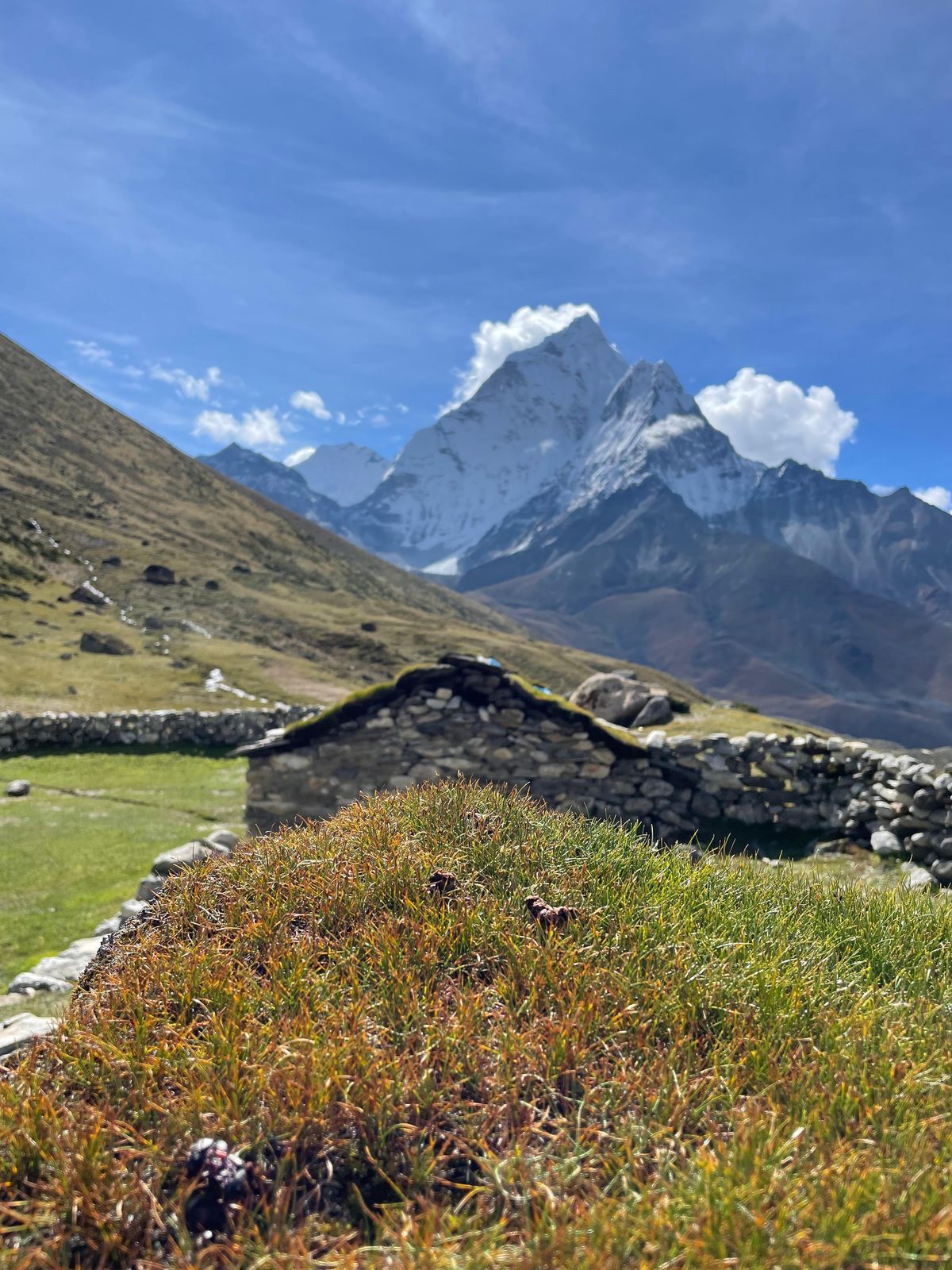
The Everest Base Camp Trek (EBC) is one of Nepal's most famous routes. It takes about two weeks to reach the Khumbu region and enjoy the stunning views of Mount Everest, the world's highest peak. However, the journey to a Buddhist monastery involves more than just climbing Everest; it also takes travelers through traditional Sherpa villages and alpine woods. Along the trip, there are innumerable chances to capture breathtaking images.
Photography Highlights:
Sunrise on Everest: Kala Patthar, which is 5,545 meters above sea level, offers an amazing vista. Everest and the neighboring peaks are illuminated by the early morning sun, which produces a stunning contrast between the deep blue sky and the snow.
Sherpa Villages: With their distinctive wooden homes and vibrant prayer flags, villages like Namche Bazar and Tengboche make for excellent photo ops. The local Sherpas are excellent portrait subjects.
Monastery and Prayer Flags: With Everest in the backdrop, Tengboche Monastery is particularly stunning during the Mani Rimdu festival. The prayer flags are ideal for capturing motion and have a dynamic appearance.
Photography Advice: Yaks and Sherpas make excellent subjects for telephoto lenses. Adapt the camera's settings to the shifting light levels. Remember to have extra batteries because they deplete quickly in chilly climates.
Annapurna Base Camp (ABC) Trek:
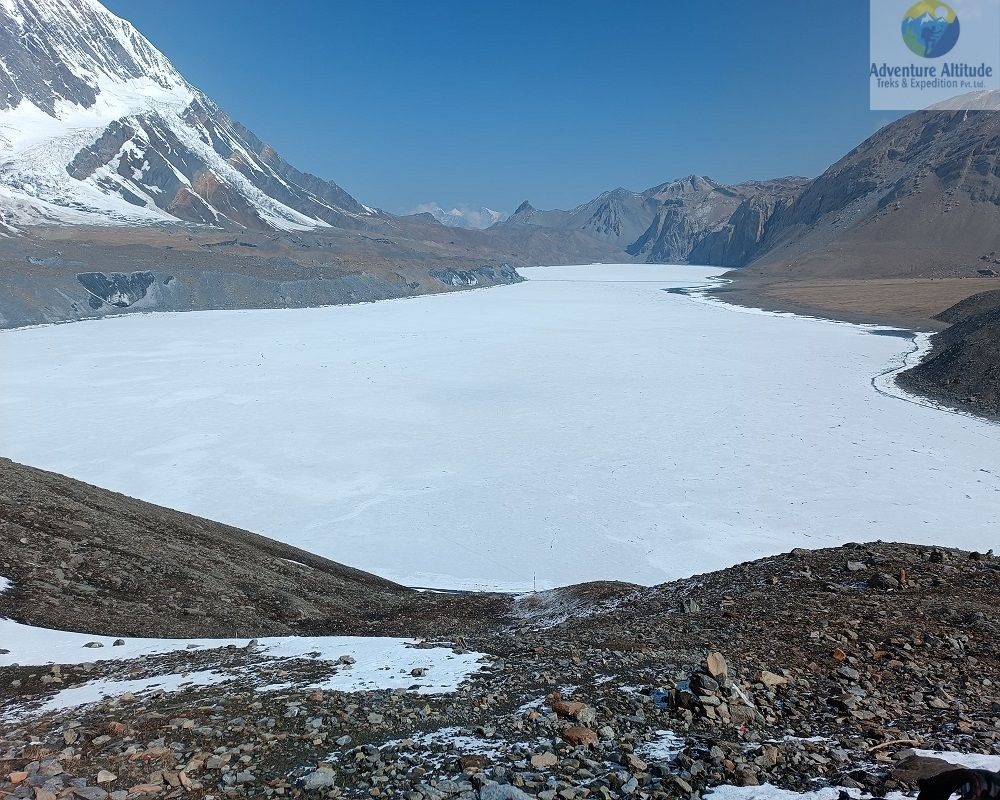
Beautiful views of the Annapurna range and other peaks may be seen throughout the journey to Annapurna Base Camp (ABC). The journey passes past rice terraces, thick forests, and terrain that shifts as you ascend. ABC is a photographer's paradise because of its authentic culture and varied natural beauties.
Photography Opportunities:
Sunrise at Annapurna Base Camp: The breathtaking sunrise over the Annapurna range is one of the trek's highlights. The peaks of Annapurna I, Fishtail, and Hiunchuli are illuminated with a strange golden hue as the first rays of sunlight strike them. Sunrise photography in Nepal might be one of the most picturesque vistas for those that rise early.
Gurung Villages: You will go past traditional Gurung villages like Ghandruk and Chhomrong along the route. Great photo ops are provided by the steep stone homes, rice terraces, and colorfully dressed women.
Trishuli River & Mugling Stopover: The Trishuli River offers stunning vistas as it meanders through steep gorges and beside verdant woods on the route from Kathmandu to Pokhara.
Photography tips: The ABC trek offers a variety of terrain – make sure to take photos of the change in landscape from subtropical forests to the alpine zone.
Photography Assignments
For portraits, shoot while in natural light to capture the warm colors of the villages and the spirit of the people.
Be sure to shoot wide-angle sun rises as the sunrise really captures the full range of the Annapurna massif.
Langtang Valley Trekking
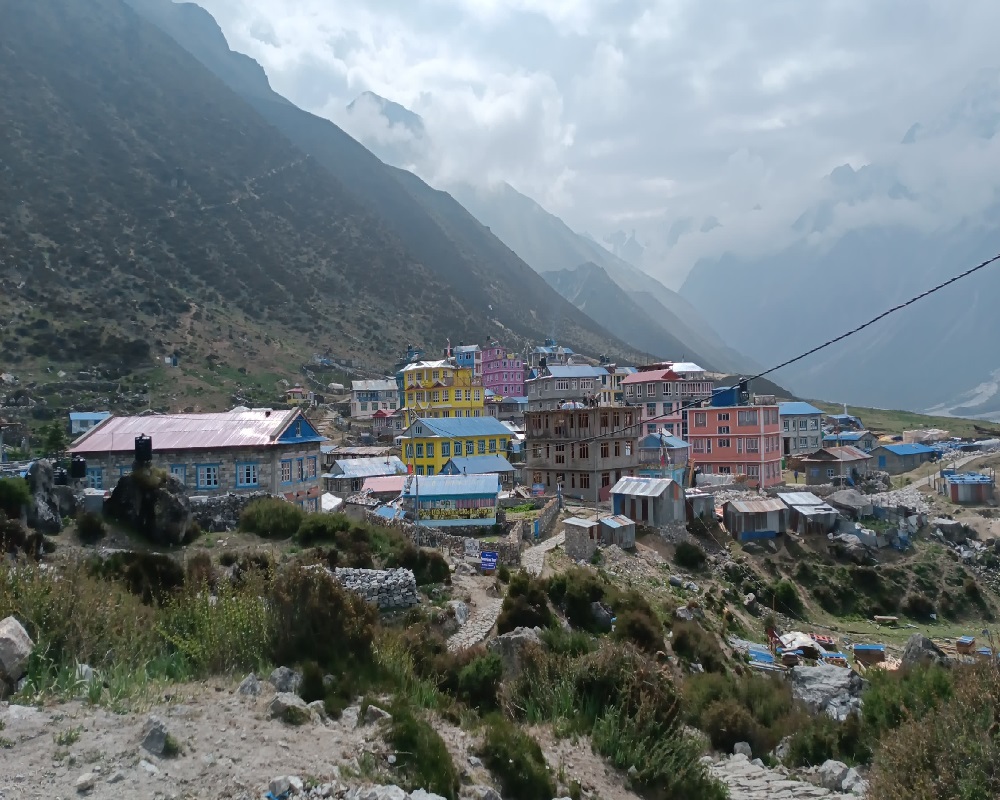
The Langtang Valley trek north of Kathmandu offers a thrilling adventure and is ideal for photographers who want to experience and capture the beauty of the Himalayas. As a popular trekking destination, Langtang has stunning scenery and culture, but it is often overlooked by busy travel schedules in favor of more popular trekking areas (Performance BB-322: EBC and ABC). It is, therefore, a hidden gem in the Himalayas.
Photography Opportunities
Misty Mountains: The Langtang Valley will not let you down in terms of atmospheric conditions. Early in the morning, the valley is frequently covered in mist, which heightens the dramatic ambiance, especially when the peaks are in the background. Haze and fog combine to produce a surreal mood that is ideal for taking atmospheric landscape photographs.
Kyanjin Gompa: Kyanjin Gompa monastery is positioned to give you expansive views of Langtang Lirung, the highest peak in the valley. Additionally, you will find the combination of the monastery's architecture and covered peaks is a fantastic opportunity for panorama shots.
Tamang Culture: The Tamang people, an ethnic minority with Tibetan ancestry, are one of the Langtang Valley's non-trekking highlights. Opportunities for portraiture may arise from their culture, attire, and way of life, particularly in the villages of Langtang Village and Lama Hotel.
Photography Recommendations
Use a polarizer, so you can cut through the haze and enhance the contrast of the mountains with the mist.
Be aware that the trek is not as popular as other routes, so take your time to explore and find your own angles.
Make sure you ask permission before taking photos of people in villages. Respecting the local culture goes a long way and can help get some of the best, genuine portraits!
Manaslu Circuit Trekking
.png)
Manaslu circuit views, off the beaten path, local The Manaslu Circuit is a newly popular trekking route that forms a loop around Mount Manaslu, the 8th highest mountain in Nepal. The trek takes you through remote villages, dense forests and a high altitude brown desert; capturing a mix of cultural and landscape photography. This trek isn't as busy as the more famous treks, so you will have the opportunity to photograph local life in its truest form.
Photography Opportunities
Scenic Landscapes: The trail provides majestic views of Manaslu and other peaks, but the best part is the variety of landscapes you'll see—from dense rainforests of rhododendron to desolate high-altitude deserts.
Traditional Villages: The route passes through villages like Soti Khola and Namrung, allowing you to shoot pictures of traditional stone houses, prayer wheels, and locals in traditional dress.
Buddhist Culture: The trek is heavily influenced by Buddhism, and you will notice many monasteries, prayer flags, and stupas while on the route. Samagaun village is where you'll want to photograph the spiritual life.
Photography Tips
The ruggedness of the terrain makes great opportunities for action shots, whether you are photographing yaks on the trails or locals carrying goods.
Take your time and be patient as you get to know the people in the villages; many are happy to forgo their pride and sit for a portrait if you take the time to get to know them.
Rara Lake Trekking
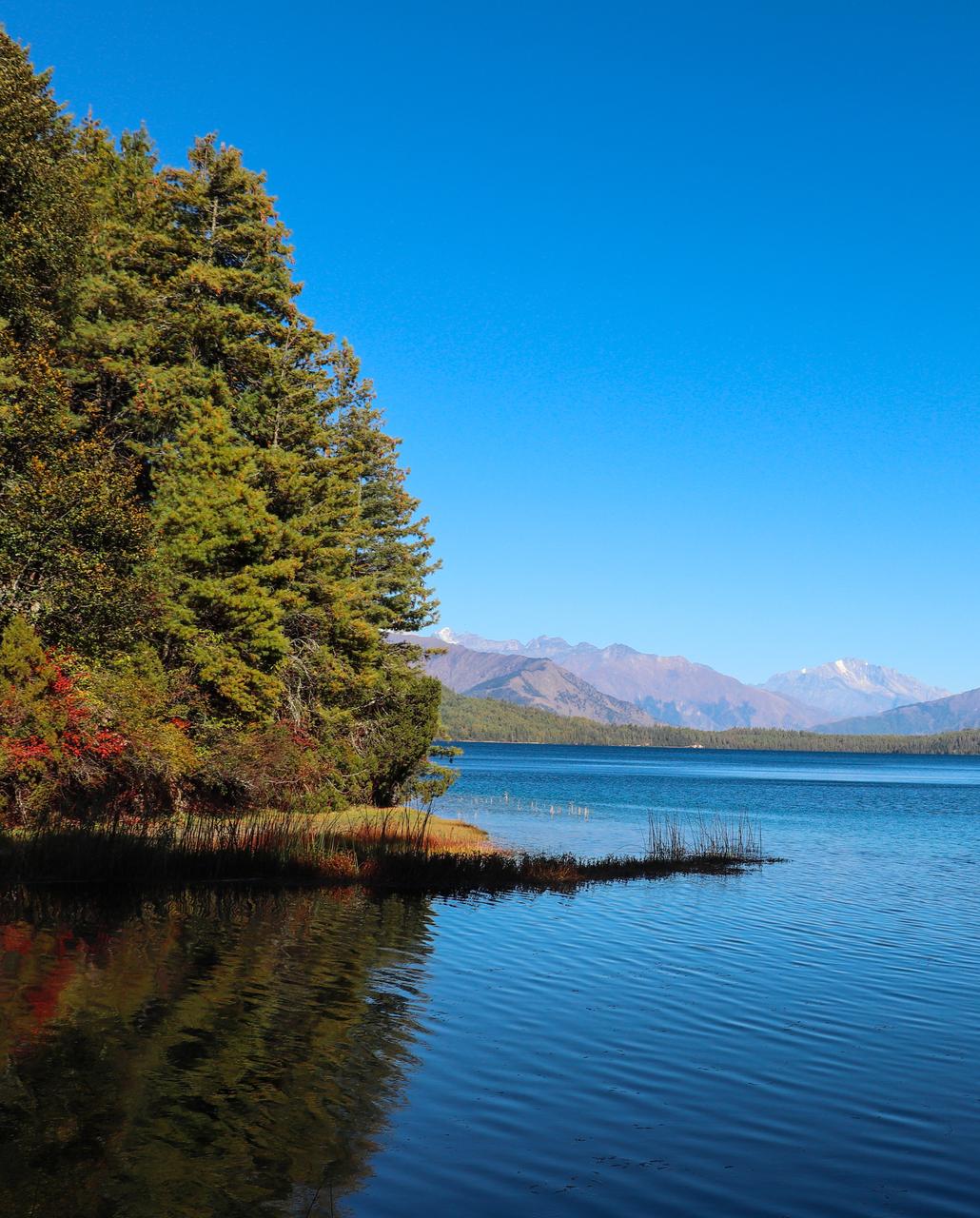
Rara Lake Trekking is one of the best hidden treasures in Nepal. Located in the remote northwest part of the country, Rara Lake is the biggest and one of the most beautiful lakes in Nepal. The journey to Rara takes you through quiet villages, green forests, and peaceful hills. The lake is surrounded by snow-covered mountains and lush pine trees. It looks like a painting in real life!
Photography Opportunities
Crystal-Clear Blue Water: The lake's color changes constantly with the position of the sun-in deep blue, turquoise, and even green hues. Magical at sunrise and sunset.
Snow-Capped Mountains in the Background: On calm days, great reflections of the mountains, such as Chankheli Peak, can be found on the placid water.
Wildflowers and Forests: Spring and early summer fill this area with colorful wildflowers around the lake. The pine, juniper, and oak forests create an additional layer, adding texture to your photographs.
Local Culture and Villages: The trekking route passes through small villages where you can photograph real village life, traditional homes, and friendly locals who go about their routines.
Peaceful Environment: Fewer tourists go to this pristine corner, so you would have all the time in the world for a perfect setup without being disturbed.
Mardi Himal Trekking
.jpg)
The Mardi Himal trek is a short off-the-beaten-path trek that has incredible views of the Annapurna range with minimal crowds. This trek is ideal for photographers who want to immerse themselves in the mountains while photographing both nature and the local culture.
Photography Opportunities
Annapurna Views: The view of Machapuchare (Fishtail) mountain from High Camp is truly impressive, where you will also see beautiful reflections of the surrounding peaks in the lakes and streams.
Local Culture: The trek travels through traditional Gurung villages, which gives you great opportunities to photograph life in rural Nepal. The houses, the interactions between people, and the overall still beauty of the landscape all make for great photographic opportunities.
Photography Tips:
This trek is shorter, it will be easier for you to play with angles and compositions.
You’ll want to capture weather shifts, as clouds often move in over the mountains, providing dynamic photography.
Upper Mustang Trekking
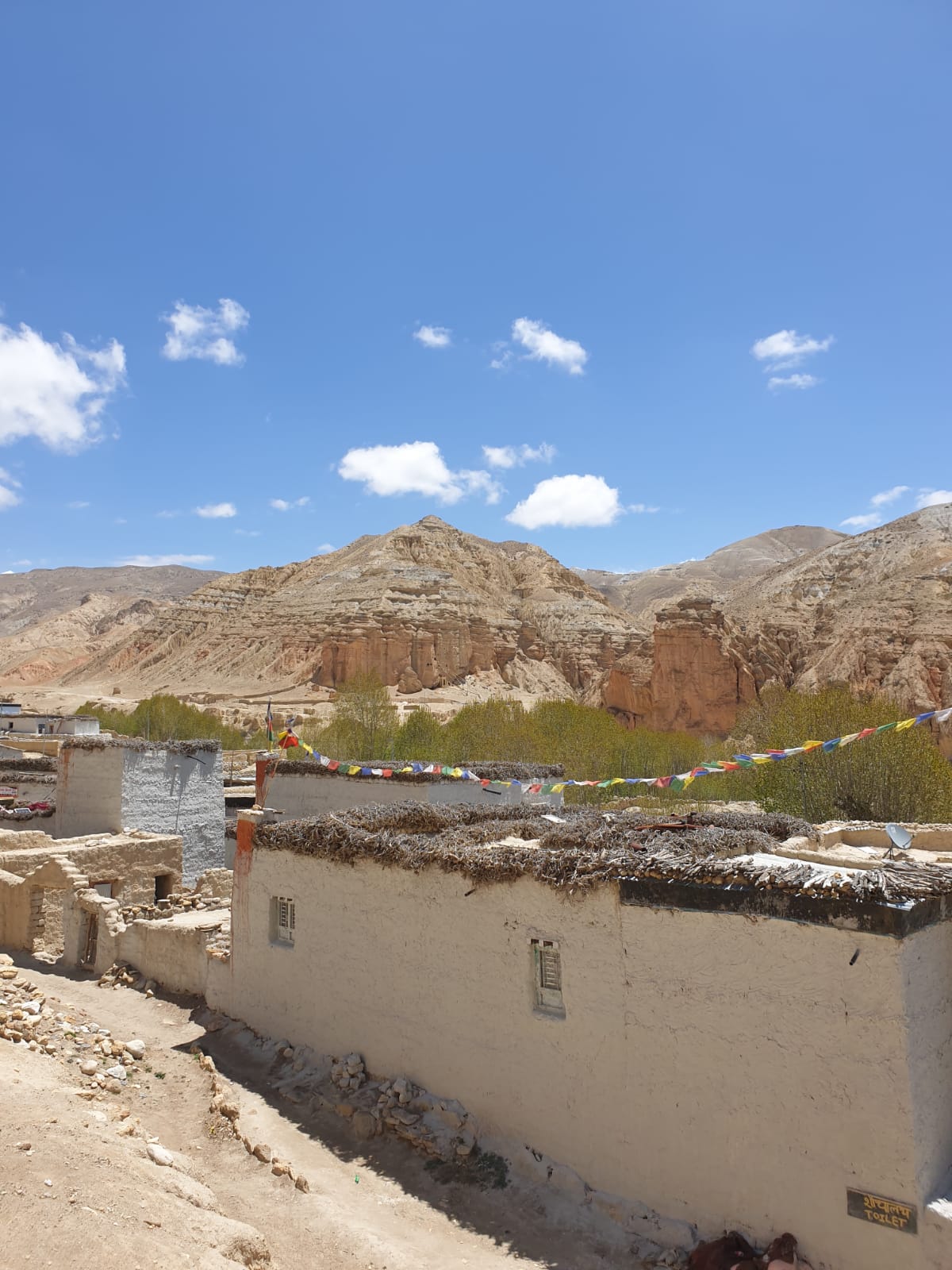
Upper Mustang is one of the most beautiful and secret places in Nepal. It is also called the "Last Forbidden Kingdom" because it was closed to outsiders until 1992. Today, it is open for travelers and photographers who want to see something very special.
The landscape in Upper Mustang is dry, colorful, and looks like a desert. The mountains, caves, old monasteries, and local houses make it a perfect place for photography.
Photography Opportunities
Start with the dramatic landscapes — colorful cliffs, eroded canyons, and deep valleys shaped by wind and time. The dry, desert-like terrain is framed by the towering peaks of the Annapurna and Dhaulagiri ranges, giving you perfect shots at sunrise and sunset when golden light bathes the land.
You can also photograph ancient monasteries, chortens, and mani walls carved with Tibetan prayers. Monasteries like Thubchen and Jampa in Lo Manthang are full of spiritual and artistic detail. The people of Mustang are another highlight — locals dressed in traditional Tibetan clothes, spinning prayer wheels or working in their fields, always with a warm smile.
During festivals like Tiji, you can capture colorful dances, masks, and rituals that tell centuries-old stories. Don’t forget the sky — Mustang’s clear air is perfect for astrophotography, with stars and the Milky Way visible on most nights.
Photography Suggestions
Prepare for dust and sun—use camera and personal protective gear.Try to capture the movement of the prayer flags and prayer wheels—photographing motion lends a sense of life and spirituality to the image.
Wide angle lenses will capture the vast landscape of the green desert vistas, while a telephoto lens will zoom into the details of monasteries and villages.
Kathmandu Valley Photographic Opportunities
Kathmandu Valley, known as the cultural center of Nepal, is an interesting mix of ancient temples, busy areas and local life. For photographers, the valley is full of varied and exciting photography potential, from sacred shrines to chaos, from buildings that are centuries old to close portraits of the people who live in this valley. The contrast of the old and the new is evident in Kathmandu, and, with a concentrated amount of historical areas, the valley will appeal to anyone who has a camera.
If you are a photographer coming to Nepal, you cannot miss out on the photography in the Kathmandu Valley. Let us examine the sites, as well as hidden gems, to capture the rich dynamic of Kathmandu history, culture, and life.
Kathmandu's Iconic Temples and Stupas
Kathmandu has some of the most important and photogenic religious locations in Nepal. With Swayambhunath Stupa (Monkey Temple) to Pashupatinath Temple, the valley has sacred locations for landscape photography and cultural photography.
Swayambhunath Stupa
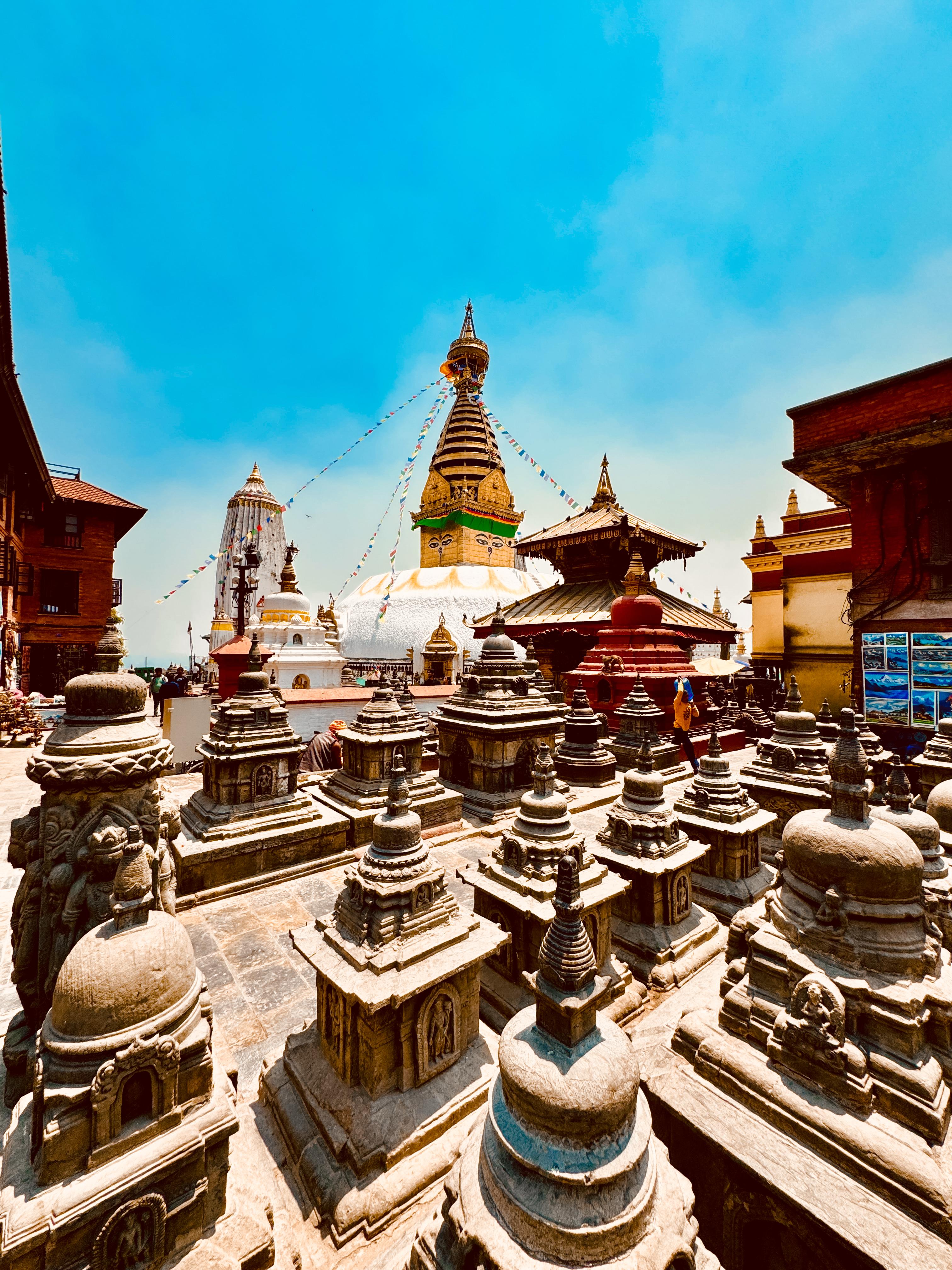
Situated on a hill, Swayambhunath is one of the holiest places for Buddhists and Hindus alike, providing excellent views of Kathmandu valley with its striking stupa with the eyes of Buddha looking into the valley. Monkeys live in the hillside, which has gained the place the name of "Monkey Temple", which will add some pop to your photographs.
Photography tips:
Wide-angles shots: Take a shot of the full stupa with Kathmandu Valley in the background, which will yield a dramatic wide-angle shot.
Monkey portraits: Monkeys around the stupa give a playful element, and could be the ideal subject for candid shots.
Golden hour: An early morning or early evening visit will lend great soft light, during which you can take an attractive photo of the stupa glowing, as well as pilgrims praying in a peaceful atmosphere.
Pashupatinath Temple
Pashupatinath is one of the most sacred temples of Hinduism, and is dedicated to worshiping Lord Shiva. The temple complex located along the banks of the Bagmati River is an unforgettable place to visit if you are interested in cultural photography. The unique experience of witnessing the Christian, cremation ghats, and religious procession makes for great subject matter.
Photography Opportunities:
Cremation Ghats: The cremation ghats on the banks of the Bagmati River represent an interesting and stunning scene to photograph and an engaging look at the Hindu funeral rites.
Priests and Devotees: The Hindu priests dressed in bright orange robes that décorate the Hindu devotee's bodies cause for stunning portrait backdrops.
Architectural Shots: The temple presents a beautiful pagoda-style architecture; the top of the temple features a golden spire and is adorned with intricate wood carvings that make for great close-up shots.
Bhaktapur Durbar Square:
A Journey Back in Time Just outside of Kathmandu is a Historic city called Bhaktapur. Bhaktapur is a UNESCO World Heritage Site with a rich collection of amazing temples, majestic palaces, and rugged old courtyards. Bhaktapur's architecture is recognized for its well-preserved aesthetics, and it offers photographers an authentic glimpse of life today compared to years ago.
Photography Opportunities:
Durbar Square Architecture: In Bhaktapur’s Durbar Square, you will see detailed stone carvings, skyward pagoda-style temples, and impressive palace-like buildings. The Vatsala Temple and Bhaktapur Palace, among other expressions of the architecture, show amazing photo opportunities set in - and alongside - an active square.
Pottery Makers: Bhaktapur is recognized for its clay pottery. It is common to see local artisans molding clay on the sidewalks, a rewarding documentary-style photograph. Seeing their clay creations and traditional pottery techniques offers insights into the narrative of the city’s diverse and rich culture.
Street Life: The narrow alleys and crowded street life in Bhaktapur are alive with chances to photograph rich street photography. Boisterous scenes with children playing, street vendors transacting business, and elderly locals continuing their routine create vibrant energy in the photographs.
Tips for Photography:
Detail Shots: Bhaktapur is home to many intricate details in the form of wooden windows, carvings, and doorways. Don't hesitate to take close-up images of these smaller elements.
Capturing People: Bhaktapur is often bustling with locals and tourists going about daily life. Capturing people, often in front of the historical buildings, can truly illustrate the blend of old and new in Bhaktapur.
Boudhanath Stupa: Center for Tibetan BuddhismNorth-east of the Kathmandu valley, Boudhanath Stupa is one of the largest Buddhist stupas in the world and an important pilgrimage site for Tibetan Buddhists. Filled with monasteries, prayer wheels, and the hum of daily ceremonies, Boudhanath is full of rich content for any photographer.
Photography options:
Prayer Flags in the Wind: Boudhanath Stupa is known for colorful prayer flags fluttering in the wind, in front of the stupa. You can focus on both movements, along with color, while using slow shutter speeds.
Monks and Pilgrims: Boudhanath is a gathering ground for Buddhist monks and pilgrims. They circumambulate the stupa chanting mantras, or spin prayer wheels along the ledge. All are rich candid opportunities for cultural photography.
Photography Tips:
Golden Hour: The stupa and surrounding area look especially beautiful in the morning and late afternoon light as it creates a softer tone and ethereal feeling. Respect the Space of Locals: This is very important when photographing monks or pilgrims. Obtaining a candid photograph, taken reflectively, will capture the respect of the place without disrupting the sacred atmosphere.
Thamel: The Heart of Kathmandu's Bustling Streets
Thamel, the tourist section of Kathmandu, has a completely different vibe than the historical temples. Its lively streets, vivid shops, and nightlife creates an ideal atmosphere for street photography, revealing to those who live in the modern, vibrant and urban life of Kathmandu.
Photography Opportunities:
Street Markets: You'll find even the narrow lanes in Thamel filled with colourful stalls selling everything from traditional handicrafts to typical tourist souvenirs. The chaos and hustle and bustle of it all, with the street and candid people photography makes the Thamel section of town the ideal place for street photography.
Characters: While in Thamel, you will find your area filled with diverse characters. Locals, tourists, shopkeepers and passers by all contribute to the flavour of Thamel. The contrast of western tourists and traditional Nepalese people is a wonderful opportunity to capture in a photograph.
Tips for Taking Photos:
Capture Motion: The busy streets of Thamel are full of motion, so why not try a slow shutter speed to capture the action of people walking past or the pass by a motorcycle.
Play with Reflections: The vibrant streets and motion of Thamel offer plenty of chances to capture reflections in puddles, windows and glass
The Streets of Kathmandu: Local Life + Hidden Gems
Some of the best parts of Kathmandu Valley are the unknown treasures found in the alleyways, courtyards, and streets of the city. The endless network of narrow alleyways in Kathmandu provide innumerable photo opportunities, shoving you right into a real-life, unscripted slice of Nepali life.
Photography Opportunities:
Local Markets: The local markets are full of energy and authenticity. From the Asan Tole Market sign to a small vendor selling fruits and veggies, these busy markets are perfect to capture and interact with everyday lives.
Street Portraits: Like most capitals around the world, Kathmandu is a melting pot of people from around the world. Don't be shy if you come across the opportunity to ask local people to take their portrait. Most locals are proud of who they are and will be delighted, or at least not offended, that you took their portrait!
Hidden Temples and Shrines: Kathmandu is filled with small shrines and temples that are hidden away in quiet spots. These locations are usually less crowded and provide peaceful moments for contemplative shots.
Photography Advice: Employ a Detail-Oriented Approach: Look closely for small, interesting details that make Kathmandu unique. This can include the brightness of spices, the textures of the surface of old buildings, or the detailing carved into street-side shrines.
Engage with People: Take time to communicate with people in order to establish a connection. Discovering the person's story will always add some context and relevance to the portraits that you capture.
The Kathmandu Valley is a photographer's dream, offering an assortment of subjects—sacred rites, beautiful architecture, colorful street scenes, or quiet little corners. Whether it's the ancient temples you are drawn to or the local everyday life, Kathmandu offers an unlimited range of possibilities to create stunning and meaningful pictures. Explore, connect with the people and photograph the vibrancy that Kathmandu Valley embodies!
Heli Tour Photography: Capturing Nepal from the Skies
.jpg)
The stunning scenery of Nepal, including its snow-capped mountains, verdant valleys, and historic towns, is a photographer's paradise. Trekking enables you to establish a close connection with nature, but a helicopter tour provides an entirely different viewpoint as you soar over the Himalayas, glistening lakes, serene towns, and meandering rivers.
Heli tours unlock remote, hard-to-reach spots, giving photographers the chance to capture wide-angle and detailed shots from above. They’re especially perfect for sweeping views of the Everest and Annapurna regions. The steady flight lets you snap crisp, awe-inspiring photos of towering peaks, tranquil valleys, and crystal-clear lakes.
For those seeking once-in-a-lifetime photographs, the Everest region provides breathtaking aerial vistas of giants such as Makalu, Lhotse, and Everest—photos that are just not achievable from terrain. With breathtaking vistas of Dhaulagiri, the famous Machapuchare, Annapurna Base Camp, and lakes like Fewa that reflect enchantment, the Annapurna region captivates.
A helicopter trip is, in summary, the best way to experience Nepal's splendor, from breathtaking views to exhilarating thrills.
Helpful Tips for Photography:
Pay Attention to the Lighting: The Annapurna region's lighting can change drastically in a short period of time. The gentle golden light in the early morning or late afternoon is wonderful, but the midday light can turn harsh with shadows.
Lens Choice: A zoom lens (24-70mm or 70-200mm) is the best choice for riding in a helicopter because you can zoom in on far away peaks or villages, without having to move your position.
Using a Wide Angle: If you want to capture the vast views of the valleys, lakes, and mountain ranges, a wide angle lens is best as you will have the ability to capture both the foreground, and the far away peaks, all from one vantage point.
Unique Aerial Perspectives: Rivers, Villages, and Valleys
Capturing the rivers, villages, and valleys as well as the patterns created when viewed from above is one of the most fascinating parts of heli tour photography. As you look at each distinct viewpoint, you can see how the rivers wind through the valleys, how the terraced fields are arranged like a mosaic, and how the intricate architecture of a community is incorporated into the valley.
Photography Opportunities:
Rivers and Gorges: Rivers that wind through steep gorges, like the Trishuli River, create intriguing patterns and structures. The power and beauty of flowing rivers are captured in breathtaking aerial photos.
Terraced Fields: Nepal is famous for its terraced fields, especially those near Pokhara and Bandipur. Aerial photographs show a repeating pattern of terraces, telling a visual story of Nepal's rural agricultural life.
Mountain Villages: Remote villages in valleys tend to blend into the landscape when viewed from the ground. Aerial photographs create a different view of these tiny homes surrounded by fields and mountains and show a powerful connection between humans and nature.
What to Pack for Photography on a Heli Tour
While heli tours offer breathtaking photography opportunities, it's crucial to pack the right gear to meet the unique challenges of aerial shooting.
A full-frame or crop-sensor DSLR or mirrorless camera handles changing light and motion well. A versatile zoom lens like a 24-70mm or 70-200mm is ideal, while a 16-35mm wide-angle captures vast landscapes, and a 100-400mm telephoto is perfect for distant details.
Use a polarizing filter to reduce reflections and enhance color—especially in snow-covered peaks or clear skies. Lastly, pack a lightweight tripod or stabilizer for steadier shots during the flight, especially in lower light conditions.
Conclusion about heli photography in Nepal
A helicopter sight-seeing tour in Nepal is an adrenaline rush, but it is also a fantastic value for photographers. There is no shortage of stunning landscapes to shoot from the massive mountains of Everest to the lush green valleys of Annapurna.
Why Hire a Local Photography Expert in Nepal?
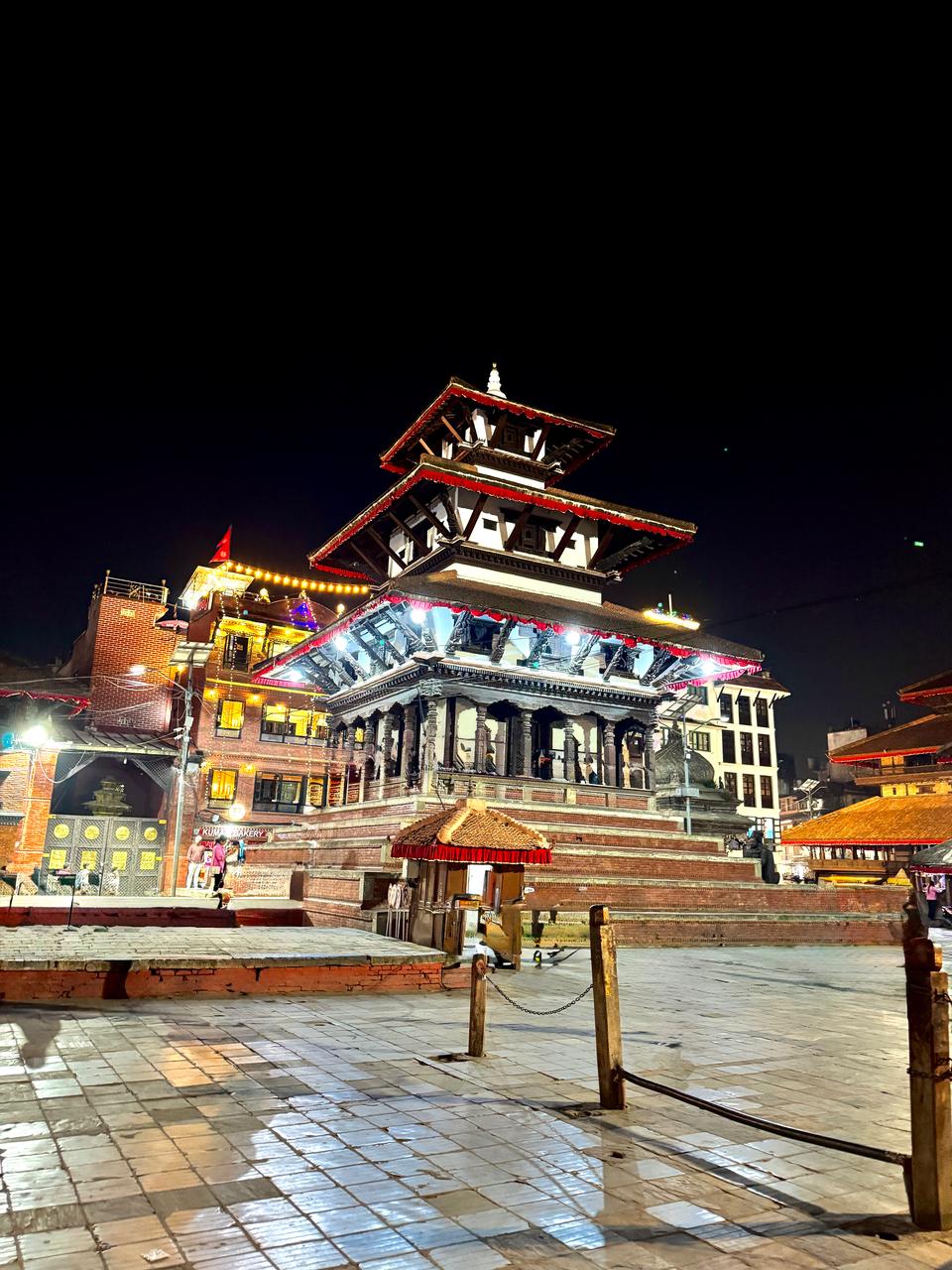
When planning a photography vacation in Nepal, hiring a local photographer is among your best options. Nepal boasts breathtaking landscapes, a variety of civilizations, and ancient traditions. While a trekking guide might help, a local photographer enhances the experience. Because they know the area well, they can point you in the direction of hidden spots that offer fantastic photo ops. In addition to providing you with expert advice, they allow you to experience Nepal's unique culture and nature.
Your trip is enhanced by a local photographer who can share their knowledge of Nepal's traditions and past. By helping you locate places you would miss on your own, they help you develop a stronger connection with the land and its people.
Off-the-beaten-path Access: Places and Local Expertise
In Nepal, hiring a local photography guide allows you to visit hidden treasures that are distant from popular tourist destinations. These guides are familiar with isolated spots that are rarely frequented by tourists, such as hidden views, hidden settlements, and little temples. These locations have exceptional chances to take breathtaking and uncommon pictures.
There are many hidden gems in Nepal where the native way of life, light, and landscapes blend together in stunning ways. Local guides can take you to unexplored locations that few photographers ever see since they have strong connections to these lesser-known locations.
For instance, they can drive you to isolated mountain communities like Upper Mustang or Rural Langtang, where you can see historic houses, industrious farmers, and stunning scenery. Additionally, you can come across undiscovered monasteries and temples that provide insight into Nepal's rich cultural past. These unusual spots offer one-of-a-kind photo ops, making your trip genuinely unforgettable.
Understanding Nepal's Traditions and Cultures:
Nepal has a rich cultural heritage, with various regional customs. There are plenty of amazing locations to photograph, from the bustling streets of Kathmandu to the serene Annapurna temples. But there's much more to using a local guide than just getting to see these places. Your images will have greater importance if you have a skilled guide who can explain the cultural significance of the locations you visit. Without this understanding, a photographer would overlook little yet significant events, like the monks' early prayers at Swayambhunath or the rites at Pashupatinath. With the aid of a guide, you can better capture these moments and gain a deeper understanding.
You will also be able to capture the authentic spirit of Nepal by taking pictures of cultural events, such as temple prayers or village weddings, with a guide. You will also meet locals, including monks and farmers, and get the opportunity to take authentic photos that convey deep, intimate tales.
For instance, you might be able to meet a family with a long history of pottery-making in Bhaktapur with the assistance of a guide. Without the connections of a local guide, it would be difficult to document these special, private moments.
Logistics and Timing
Photography in Nepal is about more than just using your camera; it's about perfect timing and logistics. Hiring a local photography guide can help with everything from obtaining permits to getting you to the right location at the right time for a perfect shot.
Trekking routes, cultural landmarks, and events in Nepal have their own special logistical requirements. For instance, permissions are required for transportation to isolated places and trekking. All of these logistics will be handled by a local guide, allowing you to concentrate on taking amazing pictures.
Photography Opportunities:
Golden Hour: Known as "golden hour," the finest times to take pictures are usually in the early morning or evening. To help you take beautiful pictures, a local guide will know the ideal locations and times.
Avoiding Crowds: It might be challenging to acquire good pictures at crowded tourist destinations like Durbar Square or Swayambhunath. A guide can help you choose more peaceful spots when the light is most beautiful and soft since they know how to handle the throng.
To help you snap beautiful temple photos without any interruptions, a guide might, for instance, accompany you to Patan Durbar Square early in the morning, before the throng arrives.
Developing Your Skills and Learning Photography Techniques
A local photography guide may serve as a great teacher, offering you tips and techniques to help you become a better photographer in addition to showing you the proper locations and providing cultural knowledge. Whether you are a novice or a semi-experienced amateur photographer, a local photography expert can give you some tricks regarding light, composition and subject matter, taking your photography to the next level.
A local photographer can show you how to shoot motion in a market scene, capture the changing sky above the mountains, or utilize the natural light at dawn or dusk. They can also advise you on technical aspects of photography and the use of lenses, exposure settings, and ton composition.
Photography Opportunities
Street photography in Kathmandu: A local photographer can give you pointers on how to shoot street scenes in Kathmandu, capturing either the colorful hustle and bustle of life in Thamel or the spiritual energy and vibrancy of the Pashupatinath temple area when it is busy.
Wildlife Photography in Chitwan: if wildlife sounds interesting, a local photographer can assist you with photographing wildlife in Chitwan National Park such as rhinoceroses, tigers or even birds in the wetland area.
Example: When visiting Chitwan, a local photographer will help you photograph wildlife in low light, giving you tips on how to capture crisp and detailed photos early in the morning or at night.
Safety and Ethical Practices of Photography
Lastly, a local guide assures that you are following ethical practices when photographing people and places. As a culturally sensitive country, it is important to treat the act of photography with paramount respect while visiting Nepal. Local guides do not only know the cultural norms of each location but also ensure you go into local communities, sensitively and respectfully with regard to their people, traditions, and privacy. They also ensure your safety, especially for travel towards remote areas or areas with higher altitudes.
Given the diverse terrain of Nepal, it can be rough. A local guide gives you peace of mind in finding your way through all of these areas in safety, while you are getting advice about what is the best location to shoot without threatening yourself or your immediate safety.
Conclusion: Enhancing Your Nepal Photography with a Local Expert
Engaging a local photographer to assist with your photography while on a trip to Nepal is a true investment that will elevate your travel experience as well as your photographs. These professionals provide insider knowledge, context to your work, and logistics that will help you capture Nepal in a way that could not be accomplished independently. Whether it be accessing otherwise inaccessible areas, understanding the context to a specific subject, or developing your technical photography skills, a local photographer will enhance your experience and help you capture amazing images that convey a greater depth of the beauty and diversity of Nepal.
How to Prepare for Your Nepal Photography: Gear, Fitness, Permits
If you are going on a photography trip to Nepal, you should think about gear, fitness, and photography permits needed to trek and photograph in different parts of the country. Nepal has some of the most beautiful photography you can find on the planet; however, if you are trekking through a variety of terrains—from the foothills of the Himalayas to the dense jungles of the Terai—there are challenges associated with a trekking photography holiday that you should be aware of before your trip.
In this section, we will summarize the best camera gear to have when using trekking photography, some suggested fitness tips that prepare you for the rigors of photography, and summary of photography permits that you must obtain to legally photograph in certain areas of Nepal.
Gear: What to Pack for Your Photography Tour
When planning a trek with a focus on photography in Nepal, the gear you take with you will be imperative to getting the best photographs possible. Nepal is home to some of the most diverse terrains you will encounter, from vibrant cities to remote mountain areas like Everest Base Camp, and each terrain requires a different consideration to your photographs. Here are some recommendations for gear based on the photographer's needs:
Camera Body:
DSLR or Mirrorless Camera: If you take photography seriously, you should have a DSLR or mirrorless camera with you. Both perform well with high quality images and interchangeable lenses. Mirrorless cameras are generally lighter and more compact, but a DSLR will tend to be more robust and have better battery life for remote sites.
Full Frame Sensor: If you have a full-frame camera, it will provide you with the best dynamic range and is better in low-light conditions that you will need when photographing dawn, dusk, or cloudy settings.Lenses:
Wide Angle Lens (16-35mm or 24-70mm): A wide-angle lens will be critical for photographs of sweeping landscapes, to capture the mountain vistas, and the scale of the scenery you will see in Nepal. You will want a lens that will take dramatic wide shots of the peaks of Everest or Annapurna.
Telephoto Lens (70-200mm): A telephoto lens will be ideal for photographing wildlife and it will allow you to photograph subjects that are far away, like monks in prayer, villagers working in the fields, and wildlife in the mountains. The capability to zoom in will allow you to photograph your subject without disturbing them.
Prime Lens (50mm or 85mm): For portraits, a prime lens with a fast aperture can give you lovely, blurred backgrounds and a chance to capture personal moments with locals, whether it be with the local farmer in Mustang or the monk in Boudhanath.
Other Useful Items:
Tripod: An adjustable lightweight tripod is key for long exposure shots (especially during sunrise or a sunset). If you want to do astrophotography, or time-lapses, a tripod is a must.
Extra Batteries and Memory Cards: Because of the cold temperatures in the mountains, your camera batteries will drain quickly, so definitely bring extras. Additionally, you will probably take quite a few shots because the scenery in Nepal is quite astounding, therefore bring plenty of memory cards.
Filter (Polarizer or ND): A polarizer filter will help reduce reflections on water or wet surfaces, and a ND filter will enable you to have a lower shutter speed in bright situations, which is great to capture motion in a river, waterfall, etc.
Camera Gear:
Waterproof Bag or Dry Bags: The weather in Nepal can change quickly, so it's important to bring a waterproof bag or some dry bags to keep your gear dry.
Lens Cleaning Kit: Dust, wind, and rain can dirty your lenses right away. Thus, bring a good cleaning kit, ideally with lens wipes, brushes and blower, to keep your lenses clean.
Lightweight Camera Bag: You will be trekking around for hours each day on your trip, so please select a lightweight, comfortable camera bag that accommodates all of your gear. A bag that hangs on your back may be better for the weight distribution, and it is good to have padded compartments for the camera bodies and lenses.
Example: If you arrive at Everest Base Camp just before sunrise, you will want to be ready to quickly change to your wide-angle lens for the vast mountain range, or you will want to use your telephoto lens to capture the yaks grazing beneath the peak.
Physical Readiness: Getting in Shape for the Trek
Nepal’s trekking trails range from easy to technical and everything in between. Many involve high-altitude trekking, rough terrain, and long days of walking. Since you will likely have camera gear with you on your trek, physical readiness is a key factor.
Trekking Fitness and Preparation:
Cardio Endurance: Being able to maintain moderate-to-high levels of activity over hours of trekking is very important in rugged terrain in Nepal. Cardiovascular activities such as hiking, running, or cycling will assist with your endurance and heart health to tackle long, exhausting days on the trail.
Strength Training: Carrying camera gear and trekking on uneven terrain is going to engage your core and leg muscles. It is important to do some strength training exercises for your legs, core, and back (squats, lunges, planks) to help keep you from getting fatigued and potentially injured.
Hiking Specifics: The best way to prepare for trekking in Nepal is to go hiking on uneven ground and carrying a weighted backpack. If you can not simulate the altitude, increase the number of steps and the amount of weight to load in your backpack to give a sense of altitude.
Altitude Preparation: If you're climbing to higher altitudes, especially on treks like Everest Base Camp or Upper Mustang, acclimatization is essential. While it may be impossible to train at high altitude, you can aid your body in preparation by spending some time hiking at altitude and combining your hikes with breathing exercises.
Example: You may also consider a test trek at a lower elevation, for example the Poon Hill Trek, to understand your limits, test your gear, and ensure your body can handle the higher and more strenuous treks like Annapurna Circuit or Manaslu Circuit.
Permits: Understand the Requirements for Trekking and Photography in Nepal
Before your trekking journey, it is helpful to understand the permit requirements to trek and photograph in certain locations in Nepal. In some cases, special permits are required to enter a region, while in other cases certain areas such as cultural sites may require permission to take photos.
Trekking Permits:
TIMS Card (Trekkers' Information Management System): The TIMS card is an obligatory permit for all trekkers in Nepal. Its purpose is to track your movements and help ensure your safety. It is needed for all trekking areas, including popular trekking areas such as Annapurna, Langtang, and Everest.
Restricted Areas Permits: Permits to access and trek through national parks are required if you are hiking through areas that are part of those parks, such as Sagarmatha National Park for Everest Base Camp or Annapurna Conservation Area for Annapurna Base Camp.
Restricted Area Permits: You will require supplementary restricted area permits if you are trekking in restricted regions, such as Upper Mustang, Kanchenjunga, or parts of the Manaslu Circuit. Fewer people visit restricted zones, which ask for more paperwork and are usually organized by a trekking service.
Photography Permits:
Cultural and Religious Sites: In some temples, monasteries, and cultural areas photography can require additional permission, especially if you are photographing sacred rituals or private ceremonies. Always ask the site authority or your local guide before photographing. Professional Photography: Should you wish to do a professional shoot or photograph for commercial use images additional permissions will be required from the authorities in your area.
For instance, a restricted area permit is necessary for trekking in Upper Mustang. This ticket not only grants entry to the area but also gives you the chance to take pictures of the breathtaking scenery, historic caves, and Tibetan culture of the area.
In conclusion, prepare yourself for the ideal photographic journey.
The secret to a successful photographic trip in Nepal is planning. You can effortlessly capture Nepal's splendor by investing in the appropriate equipment, making sure your physical condition is suitable, and being aware of the permit needs. Your journey across Nepal's magnificent scenery and rich culture will be doable and unforgettable, full of amazing memories and spectacular images, if you plan ahead.
Why Golden Hour Photography Matters: Capturing the Moment
Timing is crucial in photography, and in Nepal, there aren't many times that compare to the golden hour. Soft, warm light from this fleeting window after sunrise and before sunset elevates everyday surroundings to exceptional ones. This light is made even more enchanting by Nepal's breathtaking scenery, which highlights everything from historic temples to mountain summits.
The Golden Hour: What is it?
The first hour following sunrise and the final hour before sunset are referred to as "golden hour." The gentle, diffused light created by the sun's descent casts long shadows and gives the surrounding area a warm, golden glow. Evenings bring deeper, richer tones, whereas morning light is usually colder and more delicate.
Why Nepal's Golden Hour Is Important for
Flattering Light: Soft, diffused light lessens sharp contrasts, making it perfect for both scenery and portrait photography.
Enhanced Textures: The warm hues exquisitely bring out the textures of buildings and landscapes.
Dramatic Landscapes: The outlines of mountains and valleys are highlighted by low-angle lighting, which also adds depth and visual appeal.
Nepal: A Paradise of Golden Hours
There are countless options for golden hour Nepal photography due to the country's varied landscape, which includes towering hills, terraced farms, tranquil villages, and ancient temples.
Himalayan Sunrises: Views of Annapurna, Dhaulagiri, and even Everest may be seen from places like Poon Hill and Nagarkot. The mountains appear surreal in the gentle orange light of sunrise.
Temples & Monasteries: Under the golden light, temples like Boudhanath and Swayambhunath shine brilliantly, showcasing their daily rituals and detailed features.
Village & Street Life: The golden hour in Nepal softens the landscape in Kathmandu and rural villages, transforming ordinary scenes such as shopkeepers, morning tea, and prayer flags into timeless, intimate pictures.
Advice for Photographing Nepal's Golden Hour
Make a plan: Light changes quickly, so get there early. To keep track of timing, use apps like Sun Seeker or Golden Hour.
Use Light Creatively: To highlight textures and shapes, try using side or back lighting.
Watch the Sky: Wide-angle compositions benefit greatly from the dramatic effects of color variations in the sky.
Using a tripod is crucial in low light, particularly for long exposures or landscape photography.
Stunning Views of Everest at Dawn: Witness the golden glow as it ascends across the world's highest peaks from the Everest Base Camp route.
Kathmandu Durbar Square at Sunset: At sunset, capture the warm light shining on centuries-old buildings in Kathmandu Durbar Square, while the bustling local life takes place in the backdrop.
Ghorepani Morning Views: One of the most breathtaking morning views over snow-capped peaks can be found in this settlement, which is a highlight of the Annapurna Circuit.
Concluding remarks
There is no better time of day to capture the natural and cultural splendor of Nepal than during golden hour photography. This ephemeral light turns the ordinary into the exceptional, whether you're strolling through temple courtyards, exploring the high Himalayas, or taking in country life. Get up early and stay out late to avoid missing the opportunity to witness Nepal at its most enchanting.
Why Nepal is a Dream Destination for Landscape & Portrait Photography
Nepal offers every visitor a photography paradise by skillfully fusing the breathtaking natural beauty with the vibrant culture. The varied scenery and intriguing people of Nepal will make every shot worthwhile, regardless of your level of experience as a photographer or your passion for capturing moments. Nepal is a location where every picture tells a different narrative, from the serene monasteries to the vibrant street markets, and from the majestic Himalayan peaks to the verdant valleys.
Nepal is a photographer's dream come true because of its alluring fusion of rich culture and scenic beauty. Every location in Nepal offers a picture-perfect opportunity, from the towering Himalayan peaks to lively street markets and tranquil monasteries.
The landscape Photographing Nepal's Landscapes: From Mountains to Valleys
The scenery of Nepal is a visual feast. With eight of the ten highest mountains in the world, including Everest, Annapurna, and Kanchenjunga, its breathtaking landscape provides unparalleled chances for breathtaking photography.
Himalayan Majesty: Trekking across the Annapurna or Everest regions offers stunning vistas. Everest Base Camp offers expansive views of glaciers and a rugged ridgeline, while Annapurna Base Camp offers golden hour light on peaks like Machapuchare and Dhaulagiri.
Terraced Hills & Valleys: Gorgeous layers of texture and color are produced by terraced fields and verdant vegetation in areas like Ghorepani and Upper Mustang. Nature and local life coexist together as the sun rises over these valleys.
Pristine Lakes: In the quiet of the early morning, alpine lakes like Rara and Gosaikunda provide mirror-like reflections of the surrounding peaks.
Photographing Portraits: Nepal's Soul
Strong photo opportunities are offered by Nepal's hospitable people and cultural diversity.
Mountain Communities: Realistic photographs are provided by indigenous communities such as the Gurungs and Sherpas, who are clad in traditional garb. In the face of breathtaking scenery, everyday living in locations like Solukhumbu or the Annapurna region exemplifies tenacity and tradition.
Monastic Serenity: The bright red robes of the monks and nuns in Upper Mustang or Lumbini provide a window into the depths of Nepali spirituality. Particularly in spectacular Himalayan beauty settings or on temple grounds, their serene demeanor lends emotional weight to pictures.
A Fusion of Nature and Humanity
Nepal’s beauty lies in its contrast: towering mountains paired with intimate human stories. The grandeur of the landscapes and the warmth of its people create a unique, ever-inspiring canvas for photographers of all levels.
Using Weather & Natural Light to Your Advantage in Nepal
Nepal is one place which can utilize the weather and natural light at their best for photography. Nepal, and especially its high peaks like the Himalayas above, the mist-covered valleys, and colorful streets of Kathmandu, captures one's imagination and reflects it through the prism of the revolution-changing weather and unique light hours. It can benefit anyone trying to get into the knowledge of how to use Nepalese natural light, encouraging experimentation to take great shots in every scene. Everyday bright sunshine gives way to a dramatic-looking picture painted by the indigenous artist called Weather in Nepal, transforming an air into a lighted scene-perfect for capturing stunning photography of normal activities.
Magic of the Golden Hour
The golden hour, which is just after sunrise and before sunset, adds gentle, warm light to textures and landscapes. This time of year is ideal for photographing the Himalayan grandeur peaks, terraced fields, and historic temples in Nepal.
Morning Light: Poon Hill or Nagarkot are the greatest places to witness the pinkish glow created by sunrise over peaks like Annapurna or Fishtail.
Evening Light: The villages and valleys are illuminated with warm tones as the sun sets. The golden light in Ghorepani highlights the rich hues of the traditional Gurung houses and terraced fields.
Contrast and Shadows
Nepal's rough landscape and fluctuating light provide for dramatic compositions that make use of contrast and shadow.
Midday Mountains: The intense midday light highlights the intricacies of the rock and snow in areas like Langtang Valley.
Village Shadows: In Bhaktapur, angled light coming through ornate temple windows creates complex shadows that give architectural photographs more depth and atmosphere.
Mist & Cloud
Frequently occurring clouds and mist, particularly in high-altitude and monsoon regions, give photographs a surreal, enigmatic feel.
Misty Mornings: Valleys like Langtang are often wrapped in early morning mist, perfect for soft, moody landscapes and long exposures.
Cloud-Draped Peaks: During hikes such as Mardi Himal, clouds whirl about the mountains, partially concealing and partially exposing the peaks in brief, dramatic periods.
Mood of the Monsoon
The monsoon season (June to September) is a hidden gem for photographers, although being frequently disregarded. Rain creates majestic skies, luxuriant foliage, and softens the light.
Upper Mustang: Rain turns the parched terrain into a vibrant green, and the gloomy sky are perfect for taking melancholy landscape and portrait photos.
Conclusion
You may improve your photography and capture moments that are authentic, dramatic, and full of emotion by learning about Nepal's light and weather cycles.
Unique Perspectives for Your Nepal Photo Story
When you think of Nepal, images of towering snow-capped mountains, vibrant temples, and smiling locals often come to mind. But to truly tell a compelling photo story, you need to go beyond the obvious shots. Nepal offers a wealth of opportunities to capture unique perspectives that will not only elevate your portfolio but also provide a deeper connection to the country and its people. From wide-angle landscapes to intimate portraits, there are endless ways to bring your own vision to life.
In this section, we’ll explore creative photography ideas that will help you tell a more dynamic and diverse photo story of Nepal.
Capture Daily Life: This means photographing the daily routines of locals, such as farmers, street vendors, and artisans. Such portraits create an authentic, emotional dimension to your story. Most of all, portraits in mountain villages talk a thousand words about rich personalities and the cultural diversity they represent.
Example: A weathered face of a Tibetan Buddhist, along with a backdrop of brilliant Himalayas, would speak volumes on the relationship between the human and nature.
Street Photography in Kathmandu: That in between the above two brilliant kaleidoscopic locations, Thamel and Durbar Square, is life beyond life—of pilgrims and biking, of artisans and colorful clothes. These one or two urban moments really give buzz and holistic cultural warmth.
For example, pictures showing people maneuvering through the busy streets of Thamel or artisans working within the confines of Bhaktapur speak much about the zest urban Nepal seems to inherit.
Aerial and Drone Photography: Most landscapes in Nepal deserve a little height to be appreciated. Drones can capture the extents of the Himalayas and how villages fit inside valleys and other mountains.
Example: A shot of the drone over Everest Base Camp, with yellow tents below towering peaks, represents the size and emptiness of the area.
Misty Mountains & Long Exposures: Long-drone shots of misty valleys, such as those found in Langtang, serve up some stunning drama. Long exposures of rivers and waterfalls in areas like Annapurna make for magically textured images of landscapes.
Example: Take a long exposure of a river hike, capturing the silky water against the rugged mountains.
Cultural Details & Traditions: Close-ups of temple carvings, rituals during festivals, and traditional decorations will tell much about the rich spiritual and cultural heritage of Nepal.
Example: Hands gathering marigolds and lighting diyas during Tihar gives the viewer some lovely, emotional knowing clippings.
The Final Word: Pack That Camera - There is Nepal
Nepal is more than a country; it is a canvas. Living and breathing art, it welcomes every aspiring and professional photographer to come and delve deep within. The landscapes are grand and cinematic, but what truly sets Nepal apart is the spirit behind every frame. The light rifting through the prayer flags, the creases of a Sherpa's smile, the outline of a temple at dusk—these are not just visuals; they are narratives.
Photographic tours in Nepal go beyond simple sightseeing. They are immersive experiences that let you join in on culture, spirituality, nature, and humanity. One day, you could be in Bhaktapur capturing the golden hour, snapping candid portraits of people in Thamel, and enjoying crisp silhouettes of the Himalaya from a drone-a rare ridge that seldom gets tourists. Such diversity is what makes Nepal one of the greatest landscapes for photography on Earth.
And as great as the mountains are, often just the opposite holds true, with the little things and places making the greatest impression—the hospitality of a family welcoming you into their teahouse; the dim glow of a monastery as a monk lights butter lamps; the gleeful waving of schoolchildren as you traverse their village, These human moments: raw and unrehearsed—ground your photographs in emotion. They remind you that every remarkable photograph has a connection; a memory.
Whether on remote trails, flying amidst the Himalayas, or wandering streets of ancient Kathmandu, Nepal allows you to witness—and photograph—a world that still cherishes tradition, wilder beauty, and the lingering spirit. A world where at every turn, there is a waiting frame, and every frame holds a story.
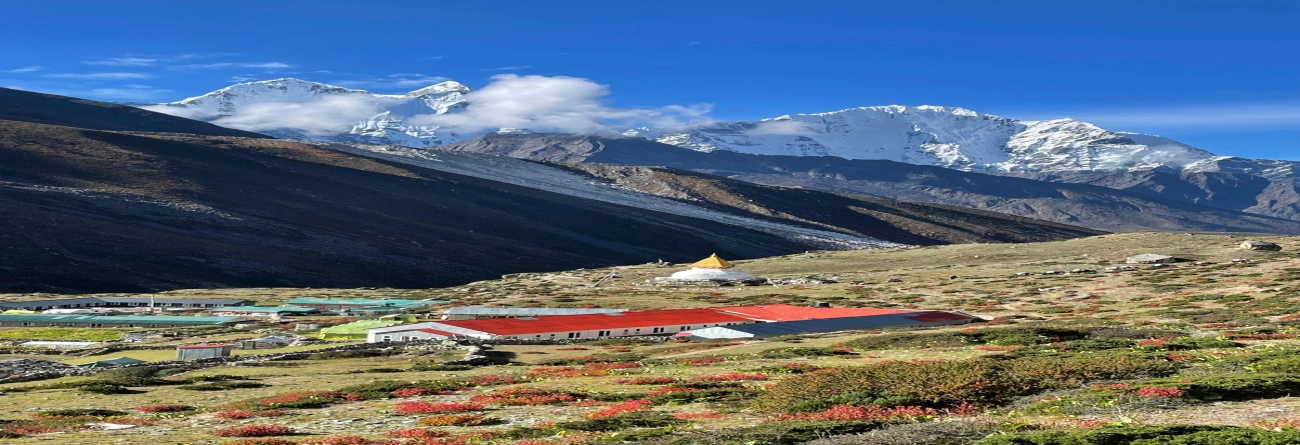



.png)

.jpg)


.jpg)

